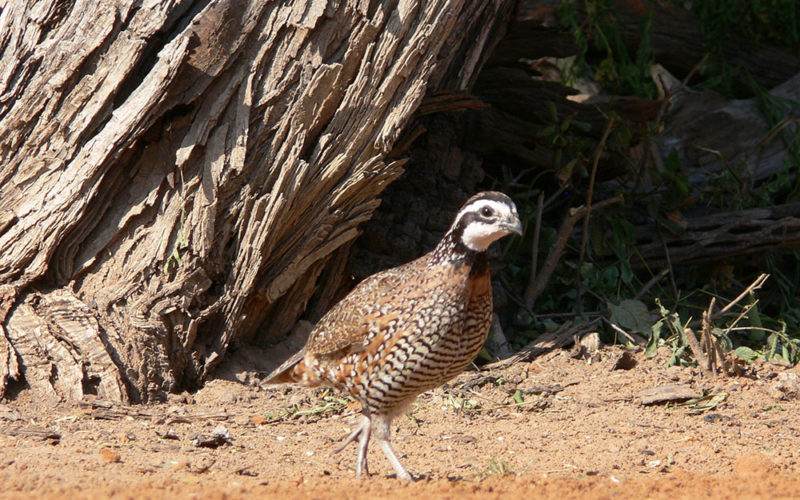Quails need our help to keep habitat
AMANDA BANCROFT
Making Ripples
While walking down our grassy driveway one evening, I was surprised to see a medium-sized butterball of a bird frozen in fear in the tall field grass. A bobwhite quail! It almost instantly flushed from the field and startled me, making me wonder which of us was the most afraid of the other.
“You look just like your photographs in the magazines!” I whispered to the retreating wings. Truly, it did. This wasn’t one of those sightings of wildlife that made me wonder whether it was this or that species; just like the couple of times I’ve seen a bobcat in our driveway, there was absolutely no mistaking this bobwhite quail for what it was. I was overjoyed!
That was my only encounter with quail at the farm where I’ve lived for the past five years. The landowner, like many farmers and hunters, remembers a time when she saw bobwhites here in her fields.
The Northern Bobwhite has been in decline, and the Arkansas Game and Fish Commission has asked landowners to help by ensuring their properties are adequate for the quail to nest, feed and be protected from predators and weather.
According to Marcus Asher, AGFC Quail Program coordinator, suitable habitat “means having areas 50 acres in size or larger that ideally have a vegetation composition of 33 percent grasses, 33 percent forbs (broadleaf plants) and 33 percent shrubby cover.”
Existing fields can be made more suitable for bobwhite quail through actions such as prescribed burning and planting native vegetation. Cover is created through brush piles or field borders and fencerows that offer something to hide in, such as native shrubs.
It may also help you to read about the quail’s life cycle or contact a wildlife biologist who can visit your property and create a wildlife management plan. The complexity of quail reproduction requires an understanding of many factors. For example, young quail thrive best among native plants and grasses that form clumps for them to hide in and evade predators in a network of low-to-the-ground “trails.” Almost everything loves to eat tasty bobwhites, so plan in advance to achieve the best reproductive success.
Depending on where you live, the type of habitat your land could offer and which grants are available, you could potentially receive financial assistance in creating a more bobwhite-friendly property.
Organizations such as Quail Forever, formed in 2005, are there to help. Their mission is to conserve quail, pheasants and other wildlife “through habitat improvements, public awareness, education and land management policies and programs.” The main goal of quail habitat restoration is to ensure that future generations don’t lose the chance to hunt or observe the bobwhite quail in all its natural glory.
Go online and visit QuailForever.org or call Hugh Lumpkin, private lands biologist for Northwest Arkansas (Benton, Washington, Carroll, Madison, Boone and Newton counties) at 479-353-7674 or email Hugh.Lumpkin@agfc.ar.gov.
Amanda Bancroft is a writer, artist, and naturalist living in an off-grid tiny house on Kessler Mountain. She and her husband Ryan blog about their adventures and offer tips to those wanting to make a difference at www.RipplesBlog.org.











